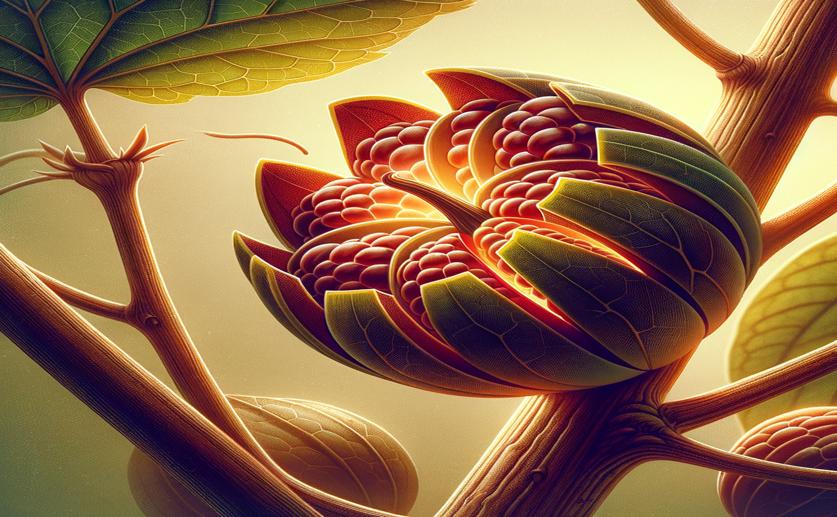
The AtrBGAL2 Gene Controls Fruit Cracking in Chocolate Vine
Jim Crocker
28th June, 2024

Image Source: Natural Science News, 2024
Key Findings
- Researchers from Jingdezhen University and the Chinese Academy of Agricultural Sciences studied fruit cracking in Akebia trifoliata
- Overexpression of the gene AtrBGAL2 in A. trifoliata led to early fruit cracking and changes in cell wall composition
- Silencing AtrBGAL2 reduced fruit cracking and altered cell wall composition in the opposite way
References
Main Study
1) The β-galactosidase gene AtrBGAL2 regulates Akebia trifoliata fruit cracking.
Published 25th June, 2024
https://doi.org/10.1016/j.ijbiomac.2024.133313
Related Studies
2) LncRNA regulates tomato fruit cracking by coordinating gene expression via a hormone-redox-cell wall network.
3) Integrative transcriptome and proteome analyses provide new insights into different stages of Akebia trifoliata fruit cracking during ripening.
4) Transcriptome analysis of atemoya pericarp elucidates the role of polysaccharide metabolism in fruit ripening and cracking after harvest.
5) Effects of hydrogen peroxide treatment on pulp breakdown, softening, and cell wall polysaccharide metabolism in fresh longan fruit.



 15th June, 2024 | Jenn Hoskins
15th June, 2024 | Jenn Hoskins